How to count birds when every bird counts: Choosing the best approach in desert mountains
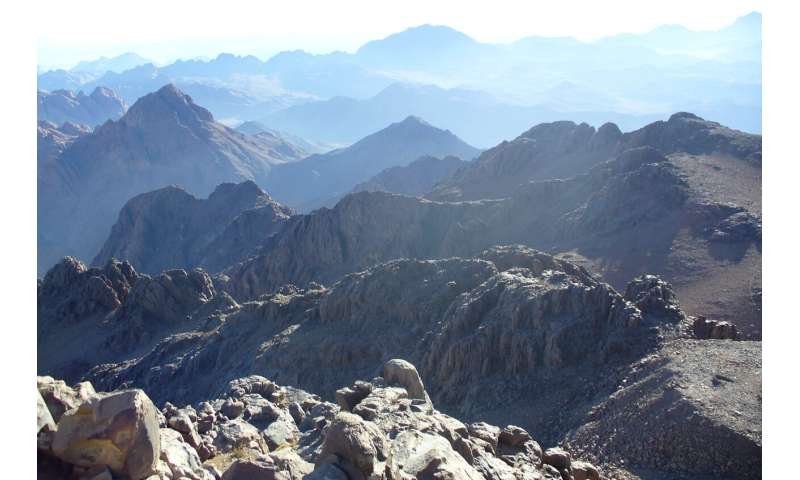
High mountain bird communities tend to be poorly studied due to their relative inaccessibility, but are vulnerable to declines and extirpations driven by global warming and habitat change, even in protected areas. Recent studies show that deserts are warming and drying rapidly in response to climate change, which is accelerated at higher elevations, increasing the pressure on birds and other wildlife already living near the edge of their physiological limits.
In light of these novel threats to birds in montane deserts, accurate information about their populations is essential to understand their responses to environmental change and to develop science-based conservation plans. But what is the best way to use limited resources to get this information? To answer this question, we compared two sampling methods to estimate densities for resident desert bird species inhabiting Egypt's Sinai mountains.
Birds of a Feather?
We conducted surveys for birds including the desert lark (Ammomanes deserti) and white-crowned wheatear (Oenanthe leucopyga). Due to the dearth of ecological studies of desert birds, particularly in the Middle East, both species remain relatively poorly known. While both species are year-round residents found in the same habitats, they vary in their detectability.
The desert lark's cryptic plumage matches desert landscapes, making this species difficult to detect even at close range. The white-crowned wheatear, on the other hand, has striking black plumage that contrasts with the surrounding landscape, and individuals often display curiosity and tameness, even approaching observers. The ideal survey method must therefore address differences in habitats as well as species' plumage and behavior that may influence their detectability.
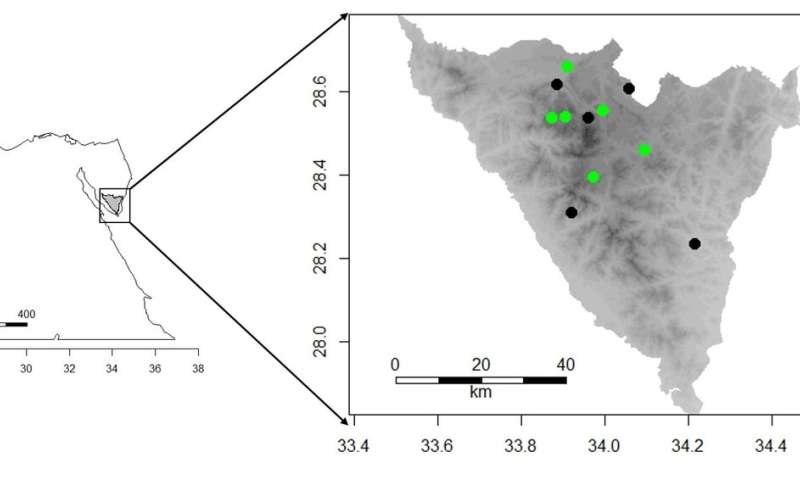
Comparing survey methods for different species in different habitats
Fixed-width strip transects and line transects using the distance sampling method are both standard bird survey methods used in a variety of habitats. We used both approaches to conduct bird surveys in wadis (river valleys) in unvegetated and vegetated desert. We defined unvegetated desert as devoid of wild or cultivated vegetation, and vegetated desert as having either patchy wild or cultivated herbaceous and woody plants.
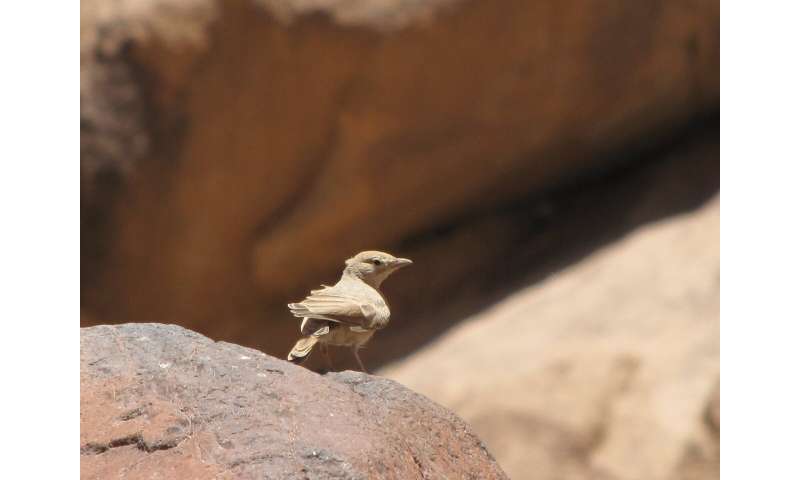
We conducted birds surveys just after dawn and again just before dusk. At each site, we conducted two transects of 3000 m, for a total of 22 transects, including 10 in unvegetated and 12 in vegetated habitats. We calculated the differences in birds' detectability using distance software and incorporated this calculation to estimate species densities. We then used several statistical approaches to test for differences and compare both methods in terms of their reliability, precision, effort, and costs.
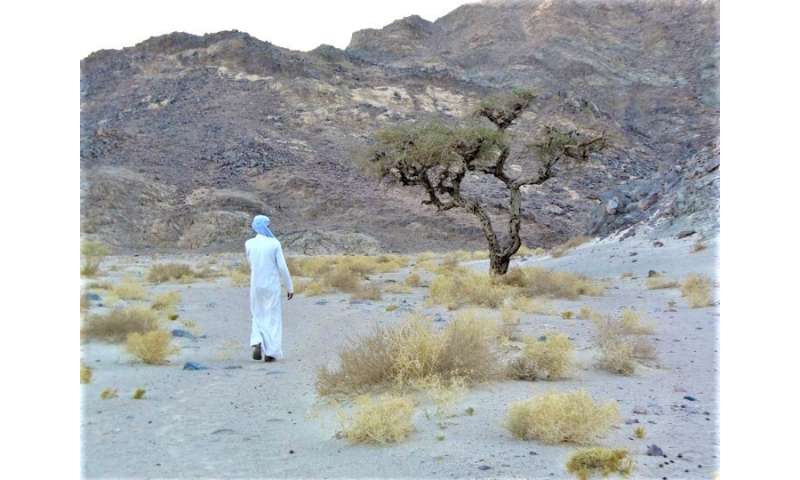
What did we find?
While both methods provided reliable density estimates given sufficient detections of target species, strip transects exhibited more flexibility overall for estimating cryptic and rare species, which comprise a large proportion of this and other montane desert bird communities. Arid regions and desert habitats host many species with small population sizes, which limits the application of distance sampling in these regions.
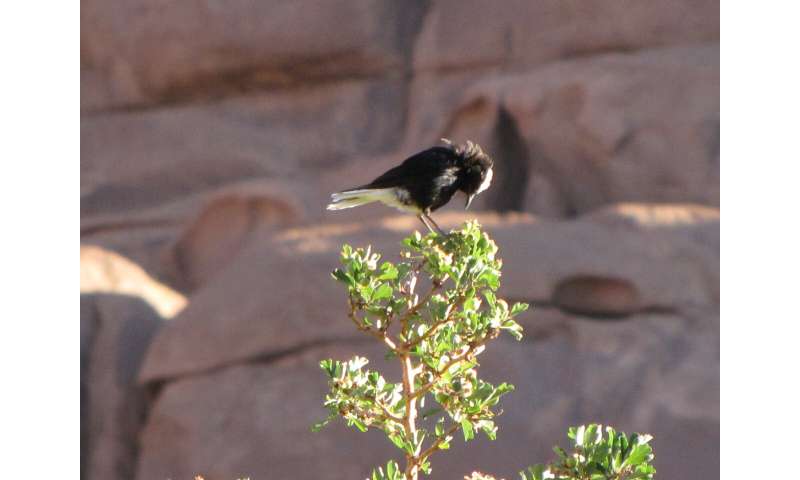
Strip transects also entail lower effort and costs, an important consideration given research funding constraints. We therefore recommend strip transects over distance sampling for estimating bird densities in this and other arid montane regions. We recommend that future studies consider additional species, habitats, food resources, and seasonality to continue to advance our knowledge of quantitative methods for studying the ecology and population responses of montane desert birds.
This story is part of Science X Dialog, where researchers can report findings from their published research articles. Visit this page for information about ScienceX Dialog and how to participate.
More information:
Mohamed Kadry et al. Estimating bird densities in montane deserts: A methodological comparison in South Sinai, Egypt, Journal of Arid Environments (2021). DOI: 10.1016/j.jaridenv.2021.104477
Bio:
Mohamed Kadry is Assistant Professor of Animal Ecology and Biodiversity, Zoology Department, Faculty of Science, Cairo University, Egypt. Nico Arcilla is Research Director of the International Bird Conservation Partnership (IBCP) and Affiliate Fellow at the University of Nebraska, USA. Sandra Goded is Liyanage Postdoctoral Fellow at IBCP. Alaaeldin is Postdoctoral Researcher in the Department of Ecology, Landscape Ecology Unit, Swedish University of Agricultural Sciences, Sweden.